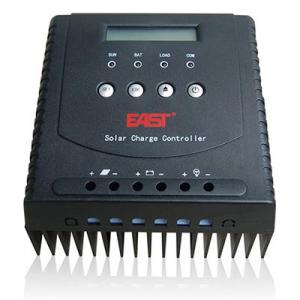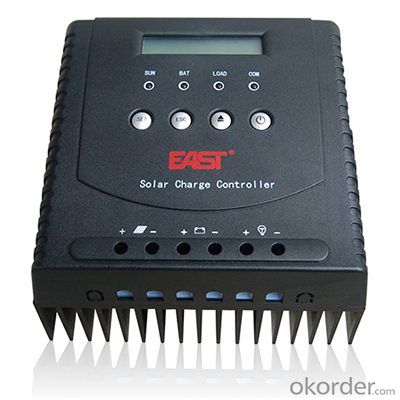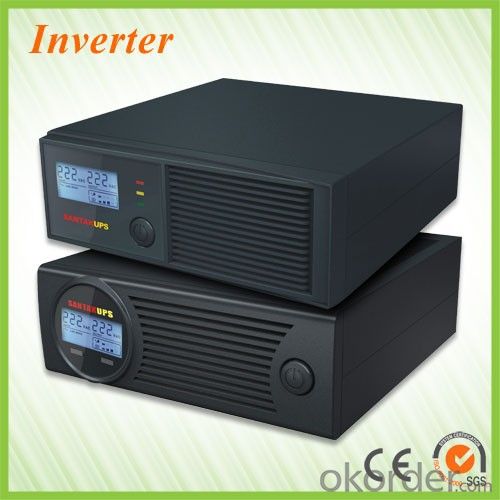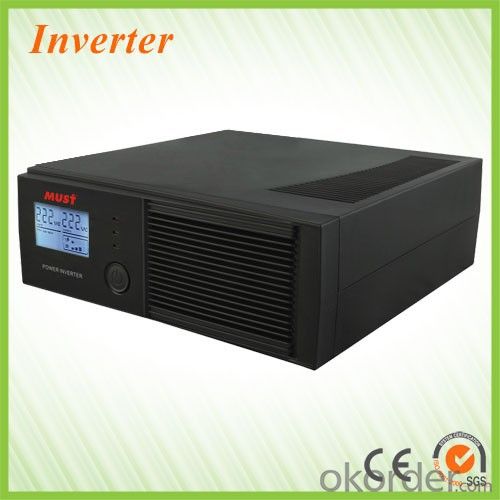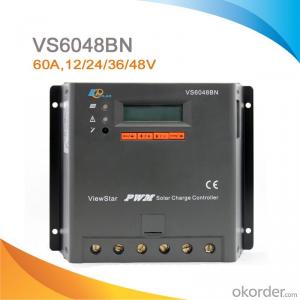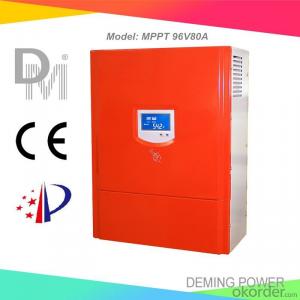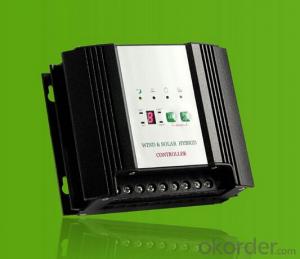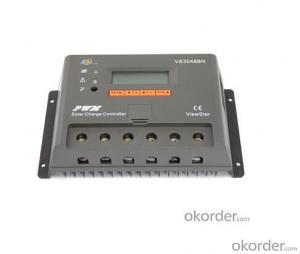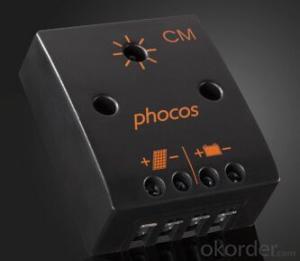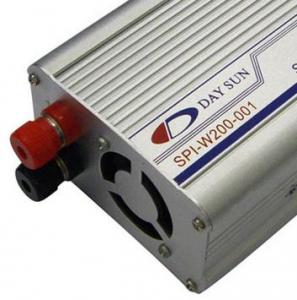Solar Inverter System Solar Charge Controller LCD 10A-60A
- Loading Port:
- China main port
- Payment Terms:
- TT or LC
- Min Order Qty:
- 1 pc
- Supply Capability:
- 1000 pc/month
OKorder Service Pledge
OKorder Financial Service
You Might Also Like
Solar Charge Controller LCD 10A-60A
This is a highly intelligent charge controller with (MPPT). The optimal and intelligent “MPPT + SOC” charge control is implemented. The power switching components consist of low-loss MOSFET type transistors that have a long operating life and guarantee high performance. The extremely low own consumption makes it especially suitable for solar home systems, solar street lamp system, advertising lighting, traffic management system, and other professional applications etc. With the reverse polarity protection, lightning protection, electronic fuse and automatic detection of faulty battery, the controller is robust, maintenance-free and user-friendly.
● Intelligent operation: the system will automatically start PV charging function without the manual operation.
● High efficiency MPPT function (optional): the system adopt maximum power point tracking technology, even if the battery using in the different condition, this MPPT controller could ensure the Maximum output power from the PV panels, and increase 20-30% electrical power using efficiency from solar panel.
● Reliability: Adopt the Hybrid controller to realize “MPPT+SOC” double intelligent charge control, ensure the product stability and reliability.
● Intelligent charge control: With automatic battery temperature compensation, constant current and constant voltage integrated charge mode, improve the battery's charging efficiency and working life.
● Battery protection: automatically detect the battery working condition, when overdischarge, the system will be shut down automatically, avoid wasting the battery energy.
● High efficiency: Power loop adopts low-loss MOSFET type transistors in series, PWM Soft switching technology is applied to reduce switching loss, Synchronous rectification technology is applied to decrease voltage drop, increase the system's efficiency.
● Intelligent: Illumination recognition auto power on(optional): the system can be set to auto turn on the load when lack of sun, such as fog,storm,night. Auto turn on the load, it is a good assistant of transportation illumination.
● Protection: Overcharge protection/ Over-discharge protection / Battery Reverse Current Protection / Overloading Protection/ Short
● Circuit Protection/ Reverse Polarity Connection Protection/ TVS lightning protection etc.
● LCD Display: to show the working mode of solar battery, seal-lead acid battery and load.
● Well Adaptability (optional): through the man-machine interface, charging current fine adjustment can be settable, suitable for Li-ion Battery, lead-acid battery and other storage system.
● Intelligent communication (optional): RS232 and dry connect
● Temperature compensation (optional): with external battery working temperature detective port, to adjust the charging voltage in time according to the battery working temperature
Model | F2448-10/M | F1224-20/M F2448-20/M | F1224-30/M F2448-30/M | F1224-40/M F2448-40/M | F1224-50/M F2448-50/M | F1224-60/M F2448-60/M |
System Voltage | 12V / 24V ;24V/ 48V | |||||
Rated Charging Current | 10A | 20A | 30A | 40A | 50A | 60A |
Rated Load Current | 10A | 20A | 30A | 40A | 50A | 60A |
PV Panels Configuration (Suggestion)(Imp≤Rated Current) | ≤10A | ≤20A | ≤30A | ≤40A | ≤50A | ≤60A |
Battery Capacity | 38Ah~800Ah | |||||
Max. Efficiency | > 98% | |||||
Static Dissipative | < 0.5%(system rated current) | |||||
Solar Battery Port Input Voltage | 12V:0-24V;24V:0-48V;48V:0-95V | |||||
Rated Battery Voltage | 12V / 24V ; 24V / 48V | |||||
Buck Charge Voltage | 14.6V / 29.2V±1% ; 29.2V/58.4V±1% | |||||
Float Charge Voltage | 14.4V / 28.8V±1% ; 28.8V/57.6V±1% | |||||
Overcharge Protection | 14.7V / 29.4V ±1% ; 29.4V / 58.8V±1% | |||||
Charging Resume Voltage | 13.2V /26.4V±1% ; 26.4V / 52.8V±1% | |||||
Undervoltage Alarm | 11.2V /22.4V±1% ; 22.4V / 44.8V±1% | |||||
Overdischarge Protection | 10.8 V / 21.6 ±0.3V ; 21.6V / 43.2 ±0.4V | |||||
Overdischarge Resume Start Voltage | 13.2 V / 26.4 ±0.3V ; 26.4 V / 52.8 ±0.4V | |||||
discharge Circuit Voltage Drop | < 5 %(System rated voltage) | |||||
Overload, Short-Circuit Protection | 125%(60S) / 150%(10S)/ short-circuit auto shut down; | |||||
PV Reverse Polarity Connection Protection | YES | |||||
Display | LCD + LED | |||||
Alarm Mode | sound(optional)/light alarm | |||||
Control Mode | Switch control / PWM | |||||
Working Temperature | c-20℃ ~ +45℃ | |||||
Relative Humidity | 0-95%(noncondensing) | |||||
Storage Temperature | -25℃ ~ +85℃ | |||||
Altitude | 1000m with rated power (increase 100m, reduce power 1%) Max.4000m | |||||
Storage Humidity | ≤85% | |||||
Installation Method | hanging vertical installation | |||||
Packing Dimension WxDxH(mm) | 164×168×55 | 164*168*100 | ||||
Weight(kg) | 0.85 | 2.05 | ||||
Packing Weight(kg) | 1.05 | 2.25 | ||||
Package | 8pcs/carton | |||||
· Q. What is an UPS and What it is for ?
An uninterruptible power supply (UPS) is a device that allows your computer or telephone switch or critical equipement to keep running for at least a short time or longer time when the primary power source is lost. It also provides protection from power surges, spikes, brownouts, interference and other unwanted problems on the supported equipment.
· Q. How long the UPS to run when power goes?
This can take 3 paths.
1.You can pick a UPS that is rated for pretty much the full VA you need so it will be running at 100% of capability and will thus last 'n' minutes.
2.You can pick a UPS that is rated at a much higher VA value than you really need so, for example, is running at 50% of capability and will thus last for longer than the UPS from option 1.
3.You can use extra external battery packs to run for longer. If charging capability allows, the more and the bigger batteries you take with, the longer time UPS runs.
or using a generator after about 6 hours, it will be more cost-effective, with a short runtime UPS to bridge the generator start-up gap.
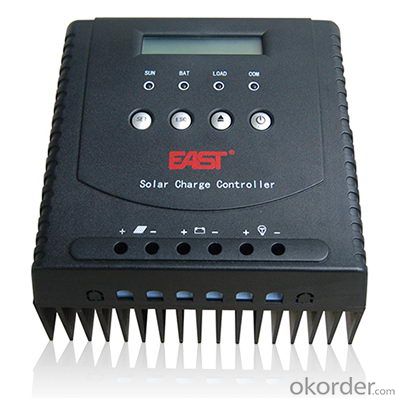

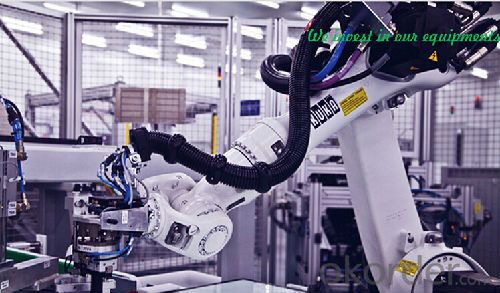
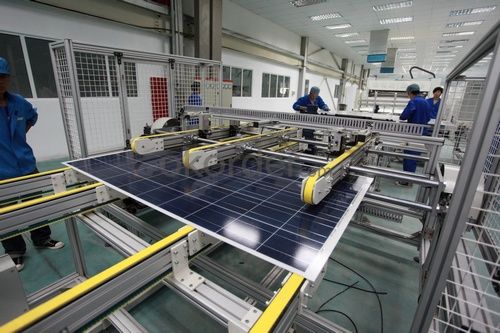
- Q: How does the input current rating affect the performance of a solar inverter?
- The input current rating of a solar inverter affects its performance by determining the maximum amount of current it can handle from the solar panels. If the input current rating is too low, it may limit the amount of power that can be converted and fed into the electrical system. On the other hand, if the input current rating is too high, it may lead to excessive heat generation and potential damage to the inverter. Therefore, selecting an appropriate input current rating is crucial for optimal performance and efficient energy conversion of a solar inverter.
- Q: What is the role of a power limiter in a solar inverter system?
- The primary function of a power limiter in a solar inverter system is to regulate the amount of power that is supplied to the grid from the solar panels. When the solar panels produce more power than necessary or permitted by the grid, the power limiter serves as a control mechanism to restrict the amount of power injected into the grid. This control mechanism ensures that the power output from the solar panels remains within the specified limits, preventing any overloading or destabilization of the grid. To achieve this, the power limiter continuously monitors the power output from the solar panels and adjusts it accordingly to meet the grid requirements. It achieves this by intelligently controlling the inverter, which converts the direct current (DC) generated by the solar panels into alternating current (AC) suitable for integration with the grid. By limiting the power fed into the grid, the power limiter plays a crucial role in maintaining the stability of the grid. It helps prevent voltage fluctuations, reduces the risk of power surges or blackouts, and ensures compliance with local regulations and grid codes pertaining to solar power generation. Furthermore, the power limiter can offer additional functionalities such as grid synchronization, anti-islanding protection, and remote monitoring. These additional features enhance the safety, reliability, and overall performance of the solar inverter system. In summary, the inclusion of a power limiter in a solar inverter system is essential for maintaining a balance between power generation and grid stability. It optimizes the use of solar energy and ensures the safe and efficient integration of solar power into the electrical grid.
- Q: Can a solar inverter be used with solar-powered desalination systems?
- Yes, a solar inverter can be used with solar-powered desalination systems. Solar inverters are essential components in solar power systems as they convert the direct current (DC) electricity generated by solar panels into alternating current (AC) electricity that can be used to power various devices, including desalination systems. By connecting the solar panels to a solar inverter, the generated solar energy can be efficiently utilized to power the desalination system, making it a sustainable and environmentally friendly solution for producing fresh water.
- Q: What is the efficiency loss of a solar inverter over time?
- The efficiency loss of a solar inverter over time depends on various factors such as the quality of the inverter, maintenance practices, and environmental conditions. Generally, high-quality inverters experience a minimal efficiency loss, typically around 0.5% to 1% per year. However, if the inverter is poorly maintained or subject to harsh conditions, the efficiency loss could be higher. Regular maintenance and monitoring can help mitigate efficiency loss and ensure optimal performance.
- Q: What is the role of a maximum power point tracker (MPPT) in a solar inverter?
- In a solar inverter, the maximum power point tracker (MPPT) plays a crucial role in optimizing the efficiency and power output of the solar panel system. Since solar panels generate direct current (DC) electricity while most appliances and the electrical grid operate on alternating current (AC), the MPPT continuously adjusts the operating conditions of the solar panels to extract the maximum power available from sunlight. The MPPT tracks the maximum power point (MPP) at which the solar panels can efficiently generate the most electricity. This is vital because the output of a solar panel depends significantly on factors like temperature, shading, and the angle of the sun. To ensure maximum power output, the MPPT continuously monitors and adjusts the voltage and current of the solar panel system, keeping it at the MPP. It achieves this by dynamically altering the electrical load on the solar panels to find the optimal operating point. Additionally, the MPPT acts as a converter, transforming the DC power generated by the solar panels into the AC power required for appliances or for feeding back into the electrical grid. This conversion process involves adjusting the voltage and frequency of the electricity to match the requirements of the appliances or the grid. In summary, the primary function of a maximum power point tracker in a solar inverter is to optimize the efficiency and power output of the solar panel system, ensuring the extraction of the maximum amount of energy from sunlight and its effective utilization for various applications.
- Q: How does a solar inverter handle low light conditions or cloudy days?
- A solar inverter handles low light conditions or cloudy days by adjusting its power output to match the available sunlight. It is designed to maximize the energy conversion efficiency even in low light situations, allowing for continuous power generation from the solar panels.
- Q: Can a solar inverter be repaired or serviced?
- Yes, a solar inverter can be repaired or serviced. Inverters are complex electronic devices that can experience faults or malfunctions over time. Depending on the issue, a qualified technician can diagnose and repair the inverter, replacing faulty components if necessary. Regular maintenance and servicing can also help identify potential problems and ensure optimal performance of the solar inverter.
- Q: Can a solar inverter be used with different solar panel brands?
- Yes, a solar inverter can be used with different solar panel brands as long as they have compatible voltage and current ratings. However, it is recommended to consult the manufacturer's specifications and guidelines to ensure optimal performance and compatibility.
- Q: Can a solar inverter be used with a portable solar panel system?
- Yes, a solar inverter can be used with a portable solar panel system. A solar inverter is responsible for converting the direct current (DC) produced by the solar panels into usable alternating current (AC) electricity. Whether it is a portable or stationary solar panel system, a solar inverter is necessary to convert the DC power into AC power that can be used to power various devices and appliances.
- Q: What is the temperature range for optimal operation of a solar inverter?
- The temperature range for optimal operation of a solar inverter typically falls between -20°C to 50°C.
Send your message to us
Solar Inverter System Solar Charge Controller LCD 10A-60A
- Loading Port:
- China main port
- Payment Terms:
- TT or LC
- Min Order Qty:
- 1 pc
- Supply Capability:
- 1000 pc/month
OKorder Service Pledge
OKorder Financial Service
Similar products
Hot products
Hot Searches
Related keywords
